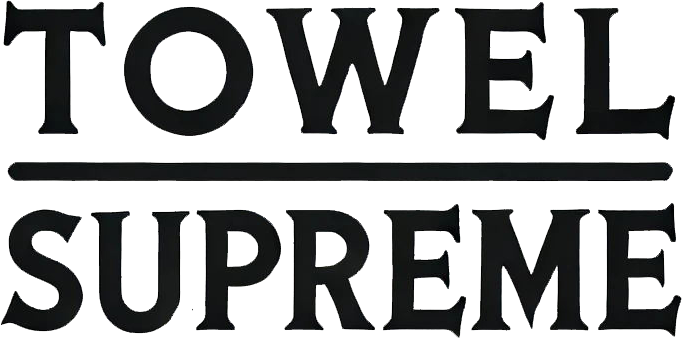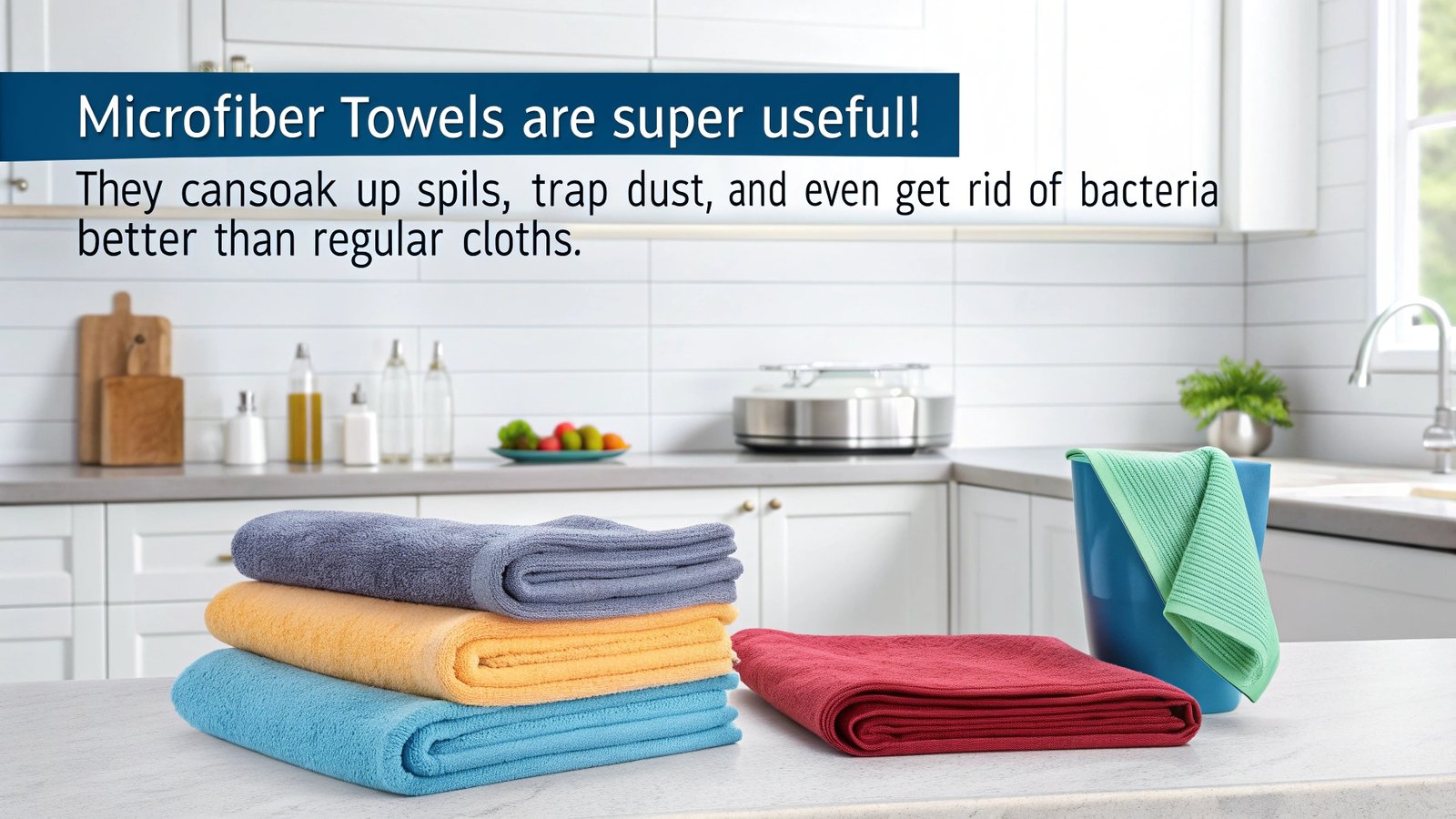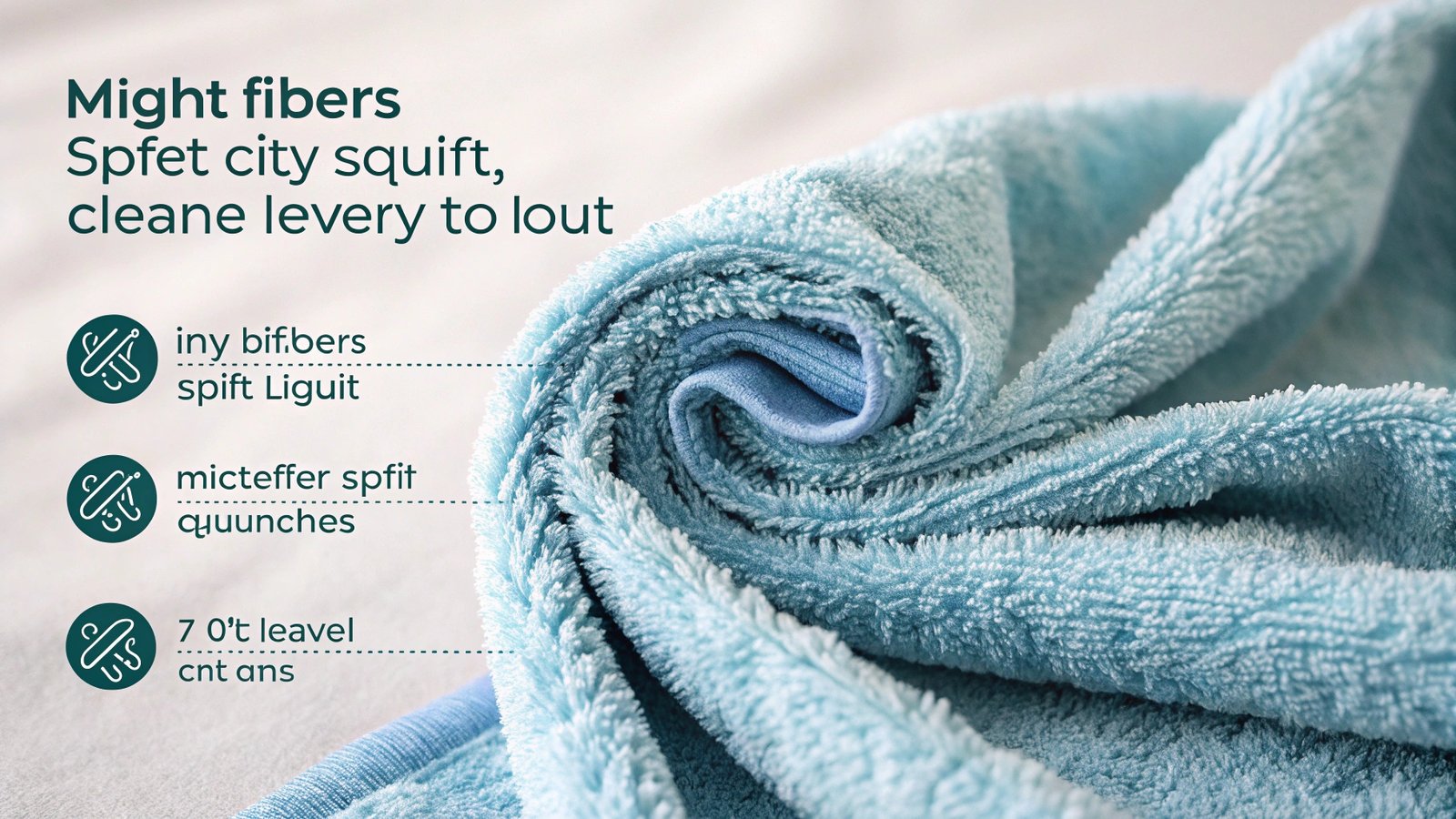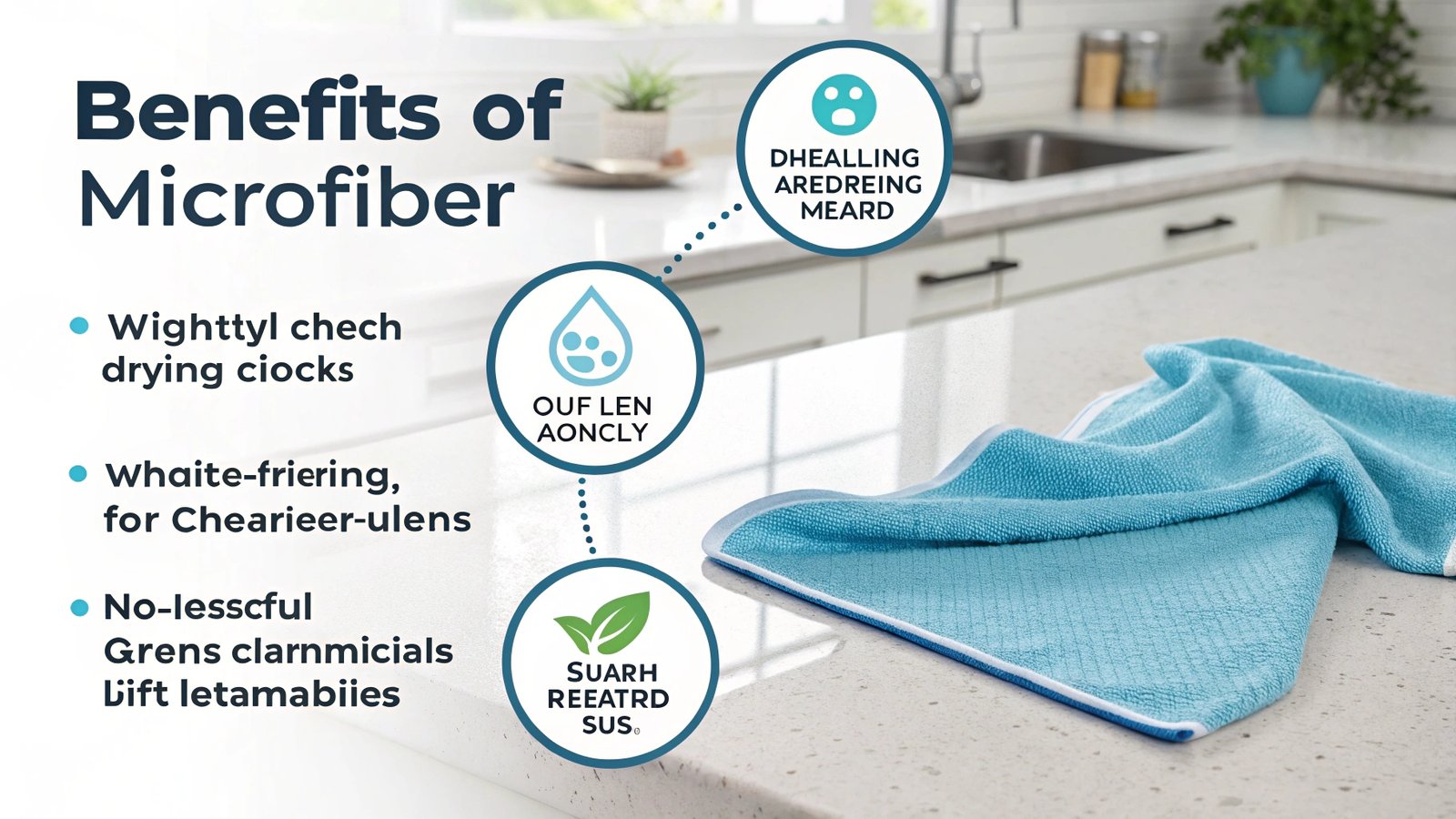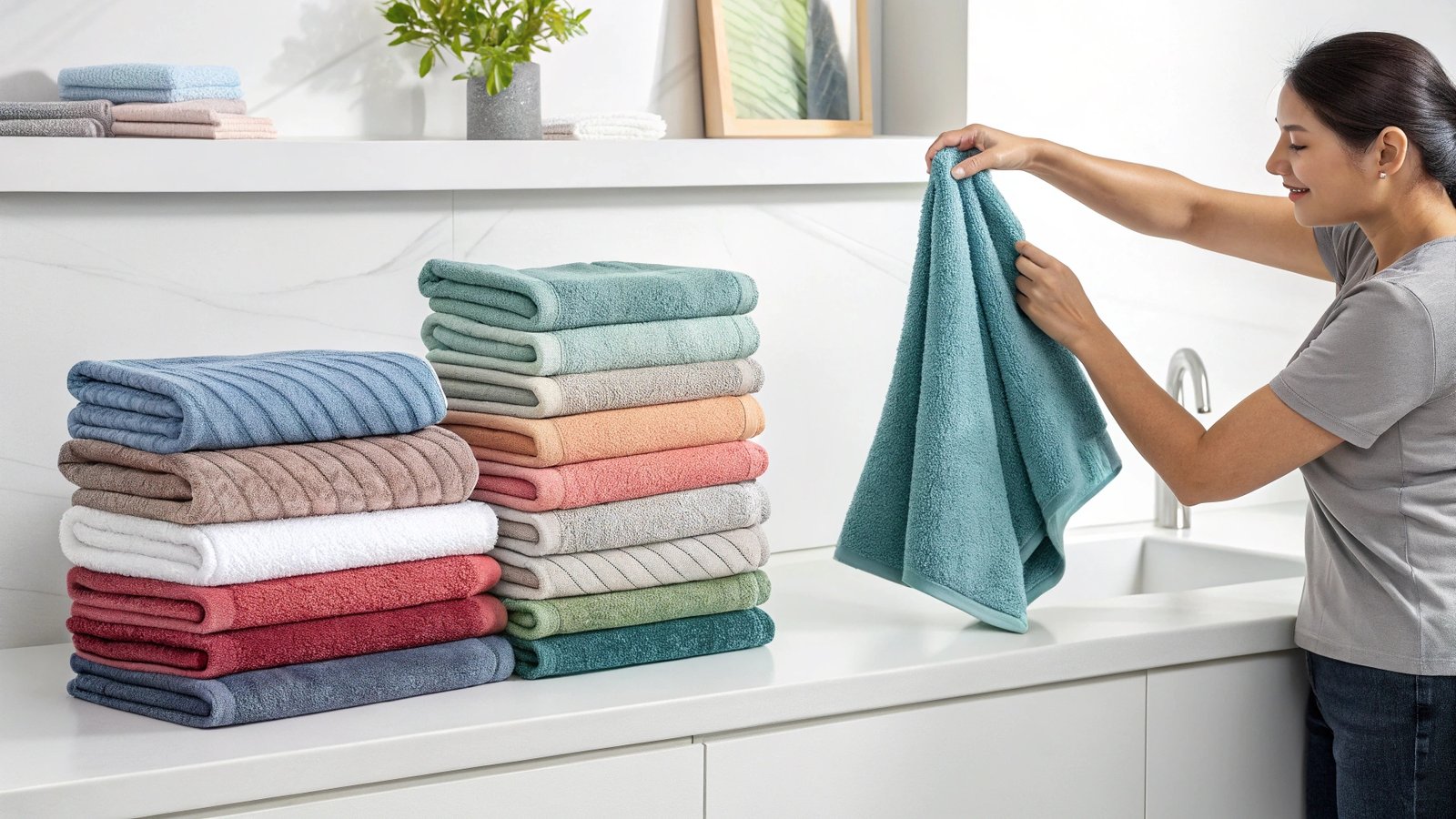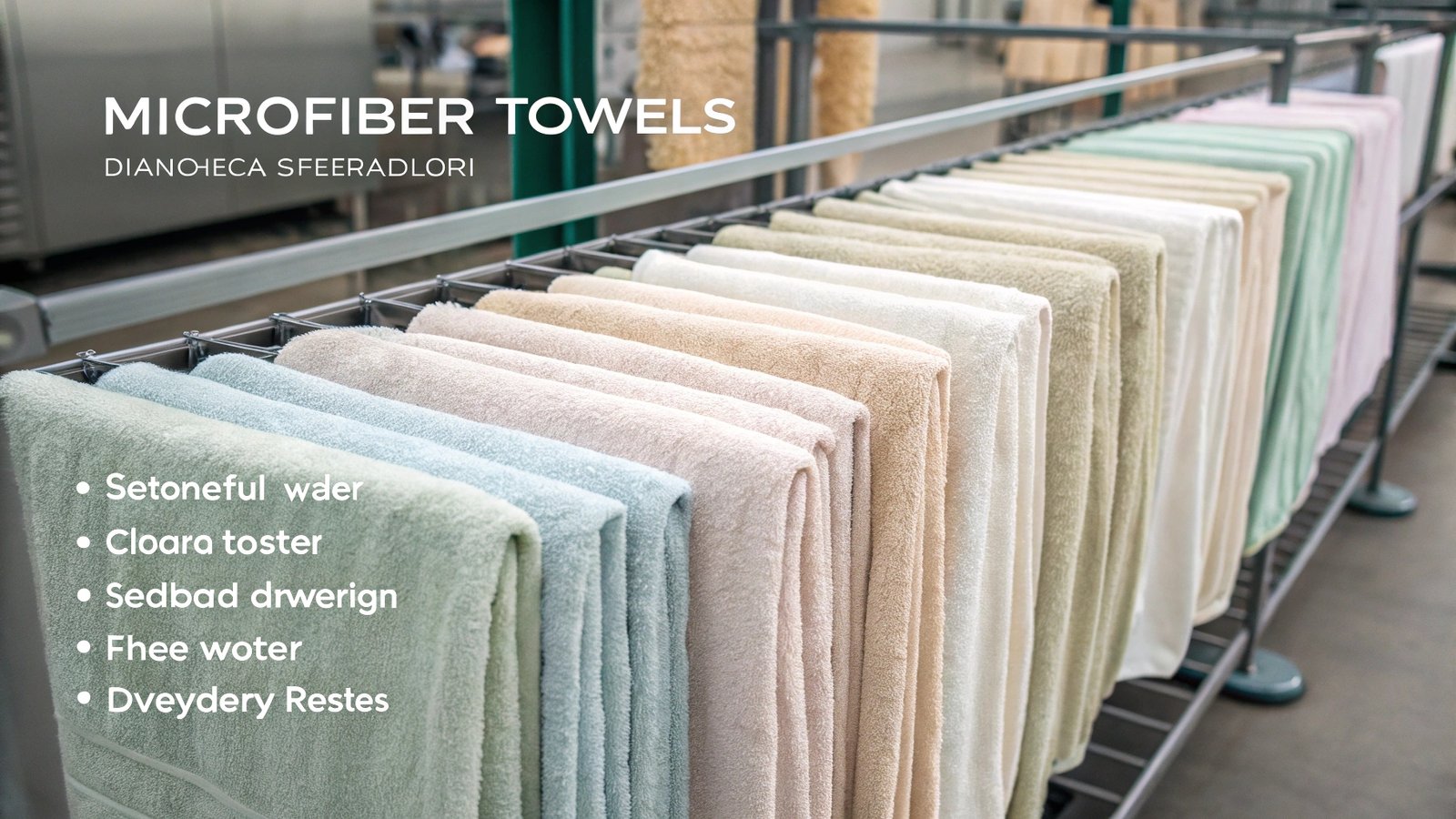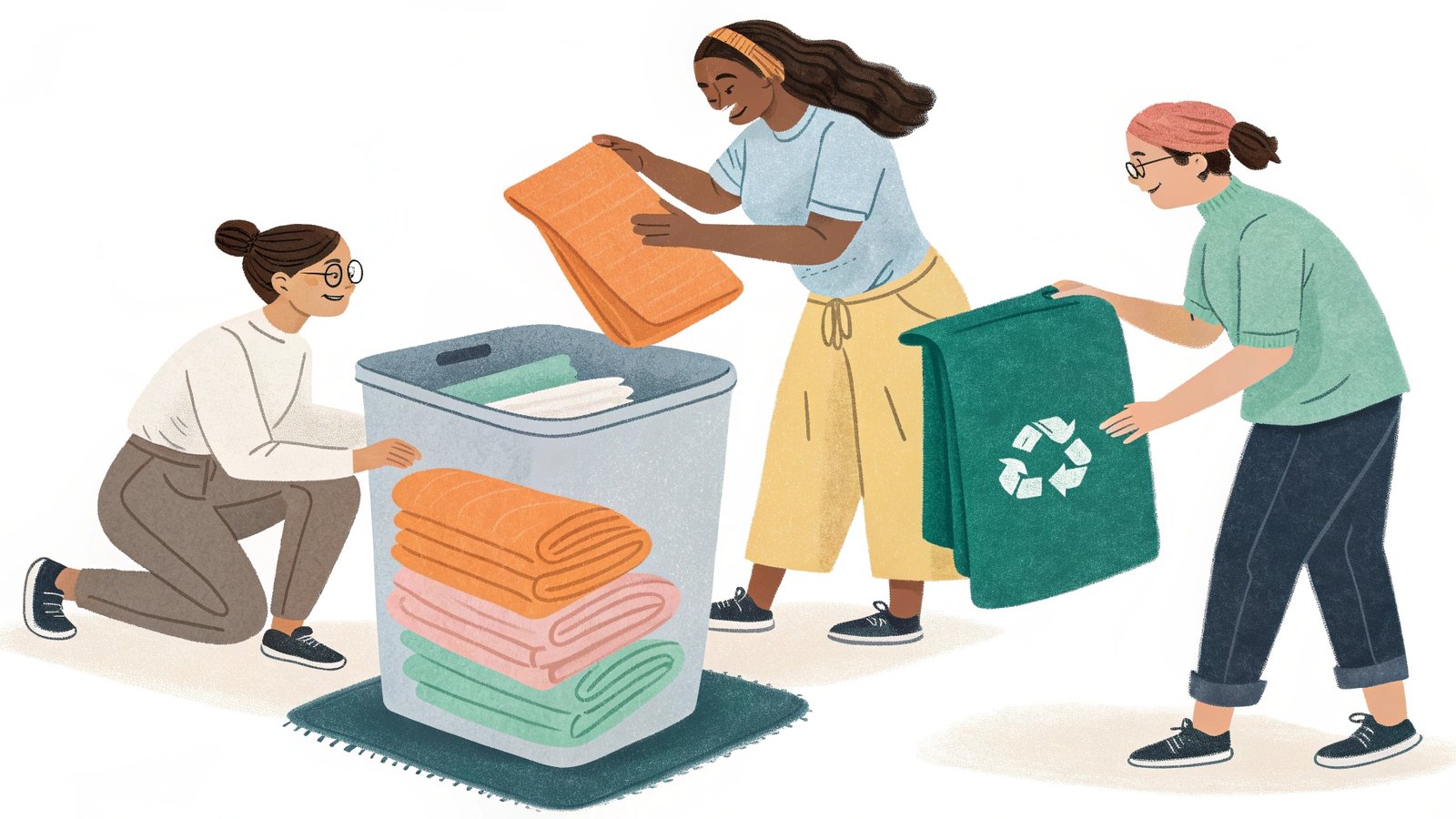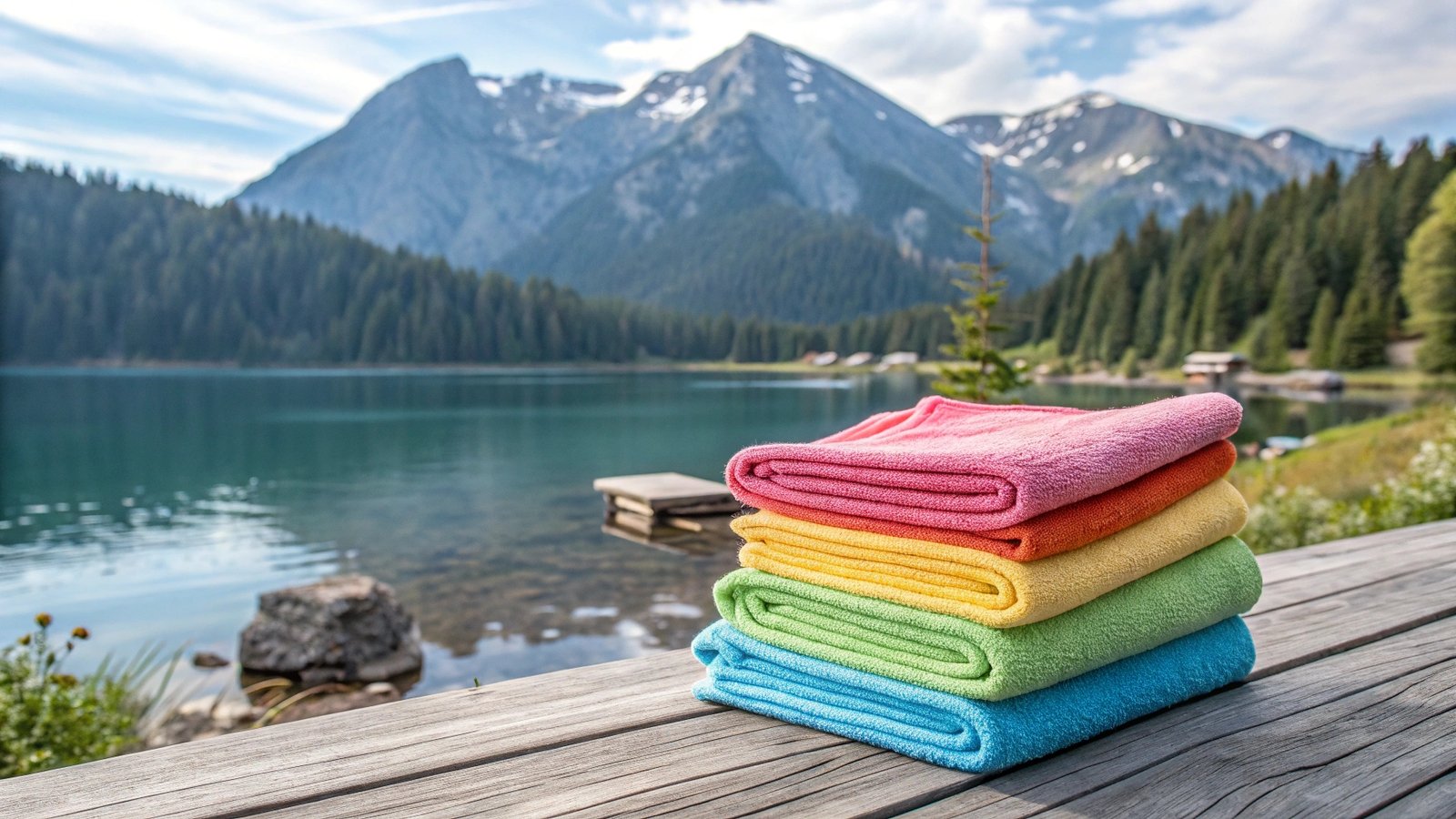Feeling overwhelmed by endless cleaning tasks?
Microfiber towels are super useful! They can soak up spills, trap dust, and even get rid of bacteria better than regular cloths. This makes cleaning faster and easier.
You might think, "Do I really need another kind of towel?" Keep reading, because I'm going to tell you why microfiber towels are a game-changer.
What is the point of microfiber towels?
Do you ever wonder why some towels just seem to push water around instead of soaking it up?
Microfiber towels are made of really tiny, split fibers that grab onto dirt and liquid. They're great for cleaning because they can hold up to seven times their weight in water and don't leave streaks.
Dive deeper:
Microfiber towels1 are made of synthetic materials2 like polyester and nylon. These materials are split into super-fine fibers, much smaller than a human hair. The splitting process creates a huge surface area, which is what makes these towels so absorbent. Think of it like this: a regular towel has large loops, but a microfiber towel has millions of tiny hooks that grab everything. I've found that this is particularly useful when I'm cleaning delicate surfaces3. The structure of the towels allows them to be effective without needing harsh chemicals. This also reduces the amount of water and energy you use to clean. This is because they are very effective, meaning that you do not have to go over a surface multiple times to clean it. The lack of loops also means that they do not leave behind lint.
What's so great about microfiber?
Are you tired of using cleaning cloths that just smear dirt around?
What's great about microfiber is that it's super absorbent, dries quickly, and doesn't leave lint behind. Plus, it can clean surfaces without needing harsh chemicals.
Dive deeper:
One of the biggest advantages of microfiber is its versatility. I use them for everything from drying my car after a wash to wiping down kitchen counters. Because they're so absorbent, they make quick work of spills. The quick-drying feature4 is also a major plus, as it helps prevent mildew and odors. For those with allergies, microfiber is a great option. It's hypoallergenic, making it a good choice for those who are sensitive to other materials. The ability to clean without chemicals is a huge benefit, especially if you have kids or pets. It is an effective way to clean up messes without risking the health of your family.
What are the uses of towels in everyday life?
Ever wondered how many things you actually use towels for?
Towels are used every day for drying hands and bodies, cleaning surfaces, and even styling hair. Microfiber towels are especially good for these tasks because they are extra absorbent and gentle.
Dive deeper:
I have a set of microfiber towels that I keep just for cleaning my car. They don't scratch the paint and leave a streak-free shine on the windows. In the kitchen, I use microfiber cloths to wipe down counters, clean up spills, and even dry dishes. These towels are great because they do not leave behind any lint. Microfiber towels are great for your skin because they are soft and absorbent, making them ideal for drying your face and body after a shower. Quick-drying feature helps prevent bacteria buildup, ensuring a more hygienic experience.
Are microfiber towels good for everyday use?
Are you wondering if it's worth switching all your old towels to microfiber?
Microfiber towels are great for everyday use. They are gentle on the skin, dry quickly, and are very absorbent. They are also good for cleaning because they can pick up dirt and bacteria effectively.
Dive deeper:
I've noticed a big difference in my cleaning routine since switching to microfiber towels. Surfaces are cleaner, and I'm using fewer cleaning products. They are also more hygienic. They are really absorbent, so they are less likely to harbor bacteria. Plus, they are easy to wash and dry. You can throw them in the washing machine. Just avoid using fabric softener, as it can reduce their absorbency. They have a smooth surface which helps to avoid disrupting the cuticles and allows curls to stay intact, resulting in less frizz.
Should you throw away microfiber towels?
Do you have some old microfiber towels that you're not sure what to do with?
Don't just throw them away! Microfiber towels can be recycled or repurposed. You can donate them to a thrift store, use them for tougher cleaning jobs, or even recycle them through special programs.
Dive deeper:
Since microfiber towels are not biodegradable, throwing them away contributes to landfill waste. Instead, consider donating them to local animal shelters or cleaning services. You can use them for cleaning dirty surfaces without worrying about ruining them. There are also some innovative programs that recycle microfiber into new products. Some companies are developing systems to take back used microfiber cloths and mops. The goal is to recycle the materials into new yarn that can be used for new microfiber products. Look for local recycling centers.
What are the pros and cons of microfiber?
Are you on the fence about buying microfiber towels?
Microfiber towels have many pros: they're absorbent, quick-drying, and great for cleaning. But, they can be less soft than cotton, and they're not as eco-friendly because they're made of synthetic materials.
Dive deeper:
One of the biggest pros of microfiber is its effectiveness. They clean surfaces without scratching, making them ideal for delicate items like electronics and glass. The cons mainly revolve around environmental concerns. Microfiber is made from synthetic materials, which are not biodegradable. It is important to consider the environmental impact of microfiber and make informed decisions about their use and disposal. You can mitigate this by washing them in a special bag that catches microplastics or by using a filter on your washing machine. In the long run, it can last up to 1,000 washes even with heavy usage.
Conclusion
Microfiber towels are a must-have for anyone who wants to clean efficiently and effectively. They can transform your cleaning routine and simplify your life.
-
Explore the advantages of microfiber towels, including their absorbency and effectiveness, to enhance your cleaning routine. ↩
-
Learn about various synthetic materials and their applications in cleaning products to make informed choices. ↩
-
Discover the best practices for cleaning delicate surfaces to avoid damage and maintain their appearance. ↩
-
Discover how the quick-drying feature of microfiber can help maintain a clean and odor-free environment, especially in damp areas. ↩
